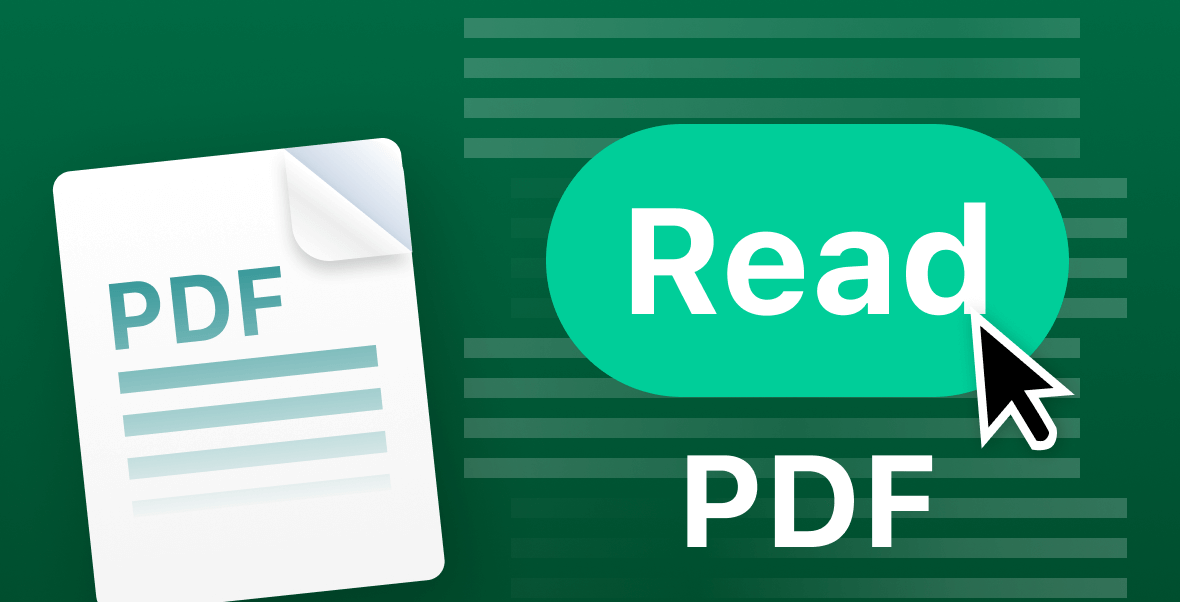PDF in the Education Sector: Revolutionizing Learning Materials and Assessments

The education sector has undergone a remarkable transformation in recent decades, largely driven by the advent of digital technology. Among the profound changes taking place, the integration of PDFs as learning materials and assessment tools stands out as a significant milestone. But what is it about PDFs that is revolutionizing education?
Unarguably, it’s their remarkable flexibility and ease of use. Whether it’s distributing lecture notes, creating interactive textbooks, or administering online assessments, PDFs provide a seamless and efficient solution for various educational needs.
In this post, we’ll explore the transformative power of PDFs in the learning experience. We will delve into the key features that enable educators and students to harness the full potential of this powerful technology, including how to convert Word to editable PDFs, modify PDF files, and even edit a signed PDF. Continue reading.
Digital Textbooks and Course Materials
Students now have access to immersive and engaging learning experiences thanks to technology and the internet. Let’s see how:
The transition from traditional textbooks to digital formats
Fueled by technological advancements, online textbooks are supplanting hard copies due to their advantages, such as the ability to convert PDF to Word online, split PDF file into multiple PDF files, and create an editable form.
And with an online PDF converter, digital textbooks can be updated and revised quickly, which ensures that students always have the most current materials.
Creating and distributing textbooks
Due to its compatibility with a wide range of devices and operating systems, PDF is commonly used for distributing digital textbooks. Other benefits of the file format include:
- The ability to incorporate interactive elements such as hyperlinks, multimedia, and annotations.
- It’s easily shareable, making them an ideal format for collaborative learning and group projects.
- It’s more secure and protects against unauthorized access and tampering, ensuring that the content remains intact and accurate.
Enhancing learning materials with multimedia elements
Digital textbooks and course materials have the potential to enhance learning by incorporating multimedia elements. These elements can include videos, audio recordings, interactive graphics, and animations.
By presenting information in multiple formats, digital materials can help engage learners, cater to different learning styles, and improve comprehension and retention.
Interactive Worksheets and Assignments
Interactive worksheets and assignments are transforming the way students learn and engage with lesson content. Here are some of the most notable benefits:
Creating interactive PDF worksheets for student engagement
Students can fill and sign fields, select options, and even submit their work directly with interactive PDFs. Not only does this make learning more engaging, but it is a time-saving and paper-free method of learning that engages students and makes learning fun.
Incorporating form fields for interactive quizzes and assessments
Form fields can be used to create interactive quizzes and assessments that allow students to test their knowledge and receive immediate feedback. This not only helps students to learn more effectively, but it also saves time for teachers who would otherwise have to manually grade hardcopy quizzes and assessments.
Collecting and grading assignments digitally
With digital assignments, teachers can easily collect and grade assignments, provide feedback, and track student progress. They can also merge PDF or split signed PDF graded tests. This not only also allows for more efficient and effective communication between teachers and students.
Collaboration and Sharing
Whether learning or teaching remotely or in person, here’s how the collaborative and sharing ability of PDF documents can seamlessly improve productivity, streamline workflows, and improve overall efficiency.
Collaborative features of PDF for group projects and discussions
PDFs are no longer just static documents. With the advent of collaborative features, they have become a powerful tool for group projects and discussions.
Students and educators can add feedback and suggestions to files with the PDF fillable form feature, for example. Additionally, they can edit PDF doc online, as well as share the files online, so everyone can collaborate from anywhere.
This type of collaboration and input on a single document can be particularly useful for team projects.
Sharing and distributing PDF materials among students and teachers
With the ability to easily share and access PDFs online, teachers can distribute course materials, assignments, and reading materials to their students with just a few clicks. In this way, learning materials costs can be reduced by more than 50%.
It is also easier for teachers to provide feedback and track progress by allowing students to easily share their work with them.
Version control and annotation tools for feedback and revision
Version control and annotation tools allow users to track changes and revisions made to a document. This makes it easier to collaborate and ensure that everyone is working on the same version.
Annotation tools, such as comments and highlights, also enable teachers and peers to provide feedback and suggestions for improvement. This helps to improve the quality of the work and fosters a culture of collaboration and continuous improvement.
Exam and Assessment Management
With its many benefits, PDF is quickly becoming the go-to format for creating and managing exams and assessments.
Secure and customizable exam delivery through PDF
With the rise of remote learning, secure and customizable exam delivery has become more important than ever. One effective solution is to deliver exams through PDF files. This allows for secure delivery of exams, as well as customization options such as adding watermarks or restricting printing and copying.
Locking and encrypting exam files for integrity and fairness
To ensure fairness and integrity in exams, it is crucial to lock and encrypt exam files. This prevents unauthorized access and tampering and ensures that all students are taking the same exam under the same conditions. This can be achieved through various software solutions that offer encryption and locking features for exam files.
Automated grading and analytics for efficient assessment
With automated grading, teachers can save time and focus on providing feedback and support to students. What’s more? Analytics can provide valuable insights into student performance and identify areas for improvement.
In addition to offering features, such as PDF convert to Word edit, programs like Lumin PDF also provide automated grading and analytics, making assessment more efficient.
Accessibility and Inclusivity
Creating accessibility and inclusivity features in PDF learning materials is essential for reaching all learners, regardless of abilities.
Designing accessible PDFs for students with disabilities
PDF files should be created with disability accessibility in mind when creating them for educational purposes. Hence, PDFs must be designed to be accessible to everyone.
Some tips for creating generally usable PDFs include using:
- Clear and simple language
- Proper headings and subheadings to organize content
- Standard fonts and colors, and
- Providing alternative text for images and charts.
Text-to-speech and screen reader compatibility
The screen reader is an assistive technology that enables people with visual impairments to hear text on a computer screen. Educational materials need to be compatible with these technologies to be accessible to students who use them.
Furthermore, text-to-speech capabilities make educational content more accessible to students with learning disabilities or difficulty reading.
Providing alternative formats for students with diverse needs
Students with diverse needs can benefit from alternative formats for educational materials, such as audio recordings of lectures or textbooks, to ensure that they have access to the content as efficiently as possible.
Students with physical or cognitive disabilities can also access materials in braille or large print or interact with interactive online materials.
Conclusion
PDF files provide educators with a cost-effective and environmentally friendly method of providing students with a wealth of information. With the continued advancement of technology, we can expect PDFs to make further advancements in education. The question remains, how will educators continue to leverage this technology to enhance student learning and engagement?






